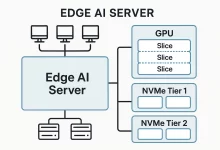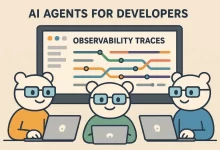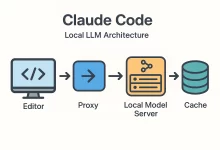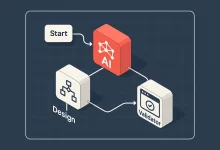In an era where data privacy and real-time intelligence are paramount, running advanced AI models directly on consumer devices is no longer science fiction. Edge AI—the deployment of machine learning models on smartphones, tablets, and other local hardware—bridges the gap between on-device convenience and cloud-level sophistication. From local inference engines to full-featured mobile applications, Edge AI is unlocking new possibilities for user privacy, latency-sensitive experiences, and offline resilience.

Why Edge AI Matters Today
Traditional cloud-based AI relies on continuous internet connectivity and server-grade processors. While powerful, this approach raises three crucial challenges:
- Privacy Risks: Transmitting personal audio, image, or text data to remote servers exposes users to potential data breaches and third-party misuse.
- Latency: Even with high-speed networks, round-trip times can introduce noticeable lag, undermining seamless experiences such as live translation, augmented reality, or voice assistants.
- Connectivity Constraints: In many parts of the world—during travel, in rural areas, or underground—network coverage is intermittent or nonexistent.
Edge AI addresses these issues head on by embedding intelligence into the device itself. Users gain immediate responses, robust privacy assurances, and offline capabilities that were once reserved for desktop or server environments.
Gemma 3n: A Case Study in Ultra-Efficient Local Models
At Google I/O, the unveiling of the Gemma 3n model represented a landmark moment in resource-constrained AI. Built on the Gemini Nano architecture and leveraging progressive layered embedding (PLE) techniques, Gemma 3n boasts a parameter footprint of 8 billion—yet its memory usage mirrors that of a much smaller 4 billion-parameter model. The result? Fluid on-device inference on smartphones with as little as 4 GB of RAM, with performance gains of up to 1.5× over its predecessor.
Key technical advances include:
- KVC Sharing & Advanced Activation Quantization: Dramatically shrinking intermediate activation size without sacrificing model fidelity.
- 128 K Token Contexts: Long-context support that allows the model to handle entire articles or multi-speaker conversations in a single pass.
- Local Multimodal Processing: Seamless handling of audio transcription, image recognition, and text generation without cloud fallbacks.
“Google AI Edge Gallery”: Democratizing Access
Beyond the model itself, Google introduced the “Google AI Edge Gallery” app—an alpha-stage marketplace where developers and enthusiasts can browse, download, and run a variety of compatible on-device AI models. Launching first on Android with iOS support “coming soon,” the Edge Gallery acts as a one-stop portal for tasks such as:
- Image generation and transformation.
- AI-driven code completion and snippet editing.
- Question-answering and multimodal chat interfaces.
By packaging models like Gemma 3n alongside specialized tools—such as prompt labs for text summarization or rewriting—Google is seeding an ecosystem where local AI innovation can flourish without network dependencies.
Privacy as a Feature, Not an Afterthought
One of Edge AI’s most compelling value propositions is the inherent privacy advantage. When voice commands, medical images, or personal notes remain on the device, the attack surface for data interception shrinks dramatically. This model is especially critical for applications in:
- Healthcare: Sensitive patient data can be processed within secure enclaves on a tablet in a rural clinic.
- Financial Services: Fraud detection algorithms analyze transaction patterns locally, reducing third-party exposure.
- Enterprise Collaboration: Corporate chatbots leverage on-premise mobile AI to comply with strict data governance requirements.
Performance That Keeps Pace with Expectations
Historically, local AI on mobile meant sacrificing performance or reducing model complexity. Advances in quantization, hardware acceleration, and memory management now allow Edge AI to deliver near-cloud quality:
- Real-Time Translation: Conversational apps translate spoken words on the fly, even in noisy environments.
- Augmented Reality Filters: Complex image segmentation and style-transfer run at 30+ FPS, enriching social media and gaming experiences.
- Developer Tooling: Integrated development environments (IDEs) on tablets can embed AI-powered auto-completions without round trips to external servers.
Developers can also fine-tune these lightweight models in platforms such as Google Colab within hours, adapting them to domain-specific tasks—from legal document summarization to on-device sentiment analysis.
The Business Impact: Driving Monetization and Differentiation
Companies across industries are realizing that Edge AI is not just a backend technical choice—it’s a strategic differentiator:
- Device Manufacturers: Pre-installing proprietary on-device AI models can justify premium pricing, lower server costs, and drive loyalty through unique experiences.
- App Developers: Apps that guarantee offline functionality can capture markets in regions with spotty connectivity and comply with stricter data laws like GDPR or CCPA.
- Enterprises: Embedding local AI directly into corporate devices eliminates expensive per-API-call billing, reducing TCO and ensuring predictable budgets.
For a hands-on walkthrough of integrating on-device AI into customer support workflows, see our guide on How I Set Up an AI Customer Service Chatbot. For UI and UX designers keen to explore generative AI in interface creation, check out Google Stitch AI UI Design Tool: Revolutionizing UI Workflows.
Challenges and the Road Ahead
Despite the momentum, Edge AI still faces hurdles:
- Hardware Fragmentation: The variety of chipsets and memory configurations across devices complicates universal optimization.
- Model Governance: Ensuring that downloaded models are secure, up-to-date, and free from adversarial tampering.
- Energy Consumption: Sustained on-device inference can impact battery life, necessitating more efficient runtime frameworks.
However, industry collaborations—such as the Agent2Agent (A2A) protocol for cross-platform AI interoperability—signal a future where developers can write once and deploy everywhere, whether on the cloud, edge servers, or local devices.
Conclusion: The Edge as the Next Frontier
Edge AI is poised to redefine how we think about mobile intelligence. By merging the privacy and responsiveness of local processing with the capabilities of state-of-the-art models like Gemma 3n, developers and businesses can create experiences that are both user-centric and technically robust. As on-device AI ecosystems mature—with dedicated galleries, prompt labs, and standardized protocols—we’re entering a new chapter where innovation isn’t limited by connectivity or cloud constraints, but fueled by the very device in your hand.

 FoxDoo Technology
FoxDoo Technology







